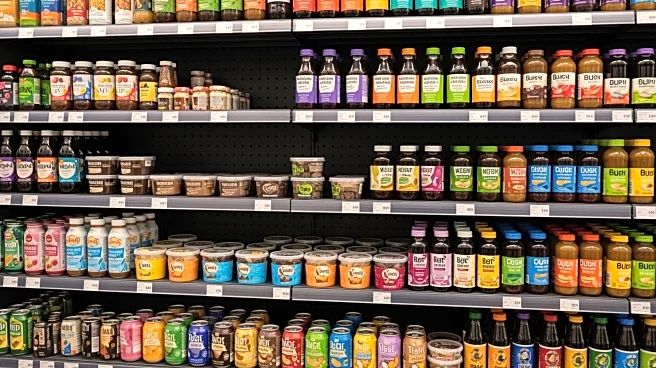What's Happening?
Convenience stores are increasingly becoming a preferred choice for individuals using GLP-1 medications, which are known to reduce appetite. According to market research firm Circana, these stores offer single-serve, portion-controlled snacks and indulgences
that cater to the dietary needs of GLP-1 users. Sally Lyons Wyatt, a global executive vice president at Circana, highlighted that GLP-1 users frequent convenience stores five times more than non-users, making these outlets crucial for meeting their unique food and beverage requirements. The research indicates that GLP-1 users, who often seek to manage weight or health conditions like diabetes, are encouraged to consume nutrient-dense foods while avoiding excess sugar and saturated fats. Convenience stores are responding by offering items such as portable protein snacks, hydration drinks, and single-item indulgences like frozen novelties and pastries.
Why It's Important?
The adaptation of convenience stores to the needs of GLP-1 users is significant for both the retail industry and consumers. As the number of GLP-1 users grows, driven by the medication's increasing affordability and availability, convenience stores stand to benefit from increased foot traffic and sales. This trend highlights a shift in consumer behavior towards healthier eating habits and portion control, which could influence broader retail strategies. For GLP-1 users, the availability of suitable food options in convenience stores supports their dietary needs and helps manage side effects such as muscle loss and dehydration. The focus on portion control and nutrient-rich foods aligns with the growing demand for health-conscious products, potentially leading to innovations in product offerings and marketing strategies within the convenience sector.
What's Next?
Convenience stores may continue to expand their offerings to better serve GLP-1 users, potentially introducing in-store signage or QR codes to highlight relevant products. As the GLP-1 user base grows, stores might increase their inventory of high-protein snacks, hydration drinks, and other items that address the specific needs of these consumers. Additionally, the resurgence of interest in products like chewing gum, due to its benefits in alleviating dry mouth—a common side effect of GLP-1 medication—could lead to increased sales in this category. Retailers are likely to focus on balancing indulgent and healthy snack options, rotating fresh products, and emphasizing nutritional information to attract and retain GLP-1 consumers.
Beyond the Headlines
The shift towards catering to GLP-1 users in convenience stores may have broader implications for the food and beverage industry. As more consumers prioritize health and wellness, there could be a cultural shift towards mindful eating and portion control, influencing product development and marketing strategies across various retail channels. This trend may also prompt discussions on the ethical considerations of marketing indulgent treats to health-conscious consumers, balancing the desire for occasional indulgence with the promotion of healthier lifestyles.














